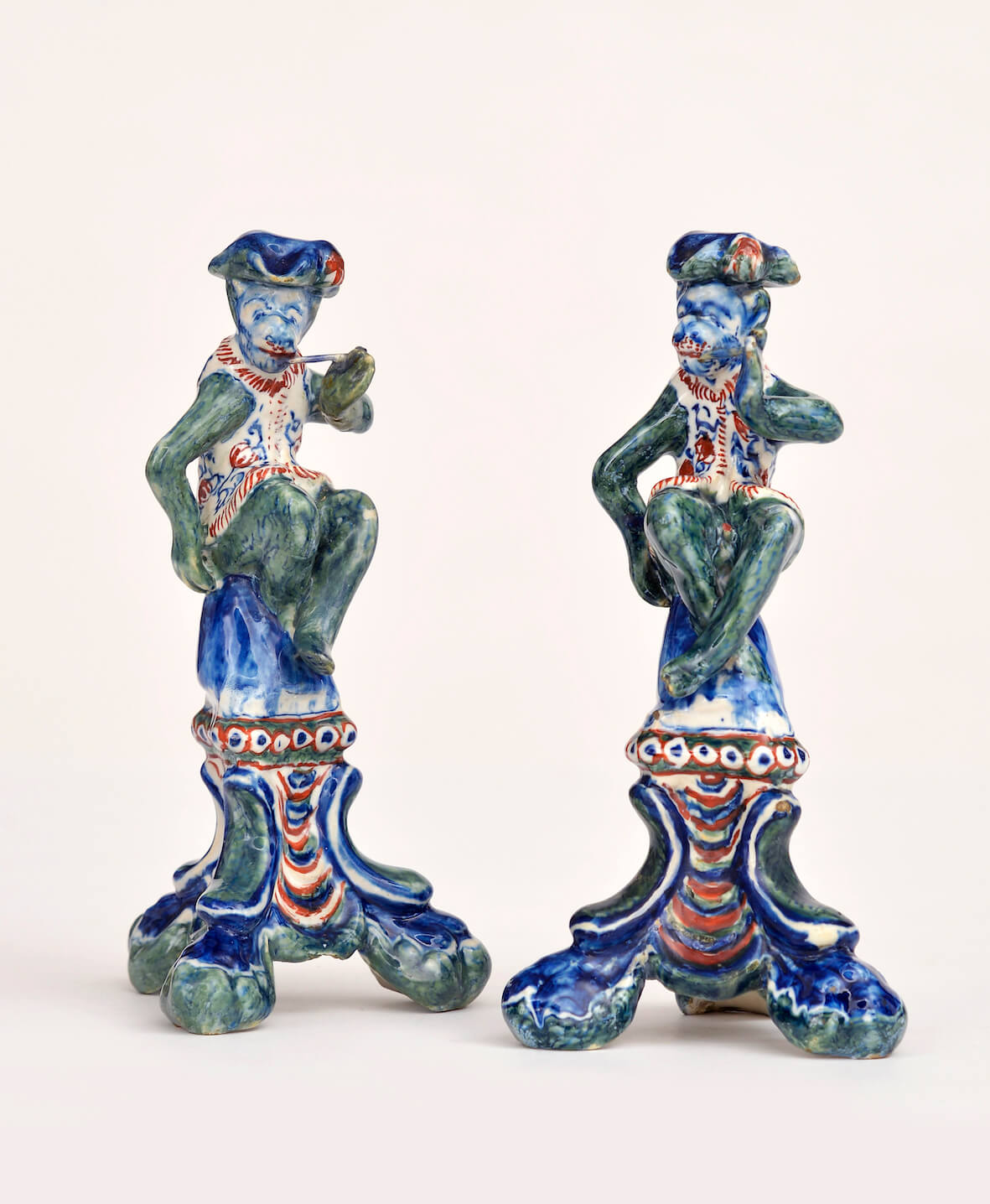D1536. Pair of Polychrome Figures of Seated Monkeys
€12.500,00
Delft, circa 1715
One marked LVE and both marked C o in iron-red for Lambertus van Eenhoorn, the owner of De Metaale Pot (The Metal Pot) Factory from 1691 until 1721
Of the same model, each with a blue-delineated green coat, wearing a blue tricorn hat with an iron-red cockade and an iron-red-fringed white waistcoat patterned with iron-red and blue flowering vines, modeled smoking a pipe held in his left paw, his right paw touching his right hip, and seated on a blue mound above a tripod pedestal, its upper edge with a blue-dotted iron-red and green guilloche border above rows of blue and iron-red scalloped fluting between the blue-edged green molded C-scroll at each corner terminating in a blue and green bulbous paw foot.
Dimensions
Height: 16.8 cm. (6 5/8 in.)
In stock
Description
Note
With their high intelligence and their humanlike behavior in which we can recognize our own, monkeys and apes were either loved or hated. In art, from the fourteenth throughout the seventeenth century, monkeys were not so much targets of ridicule themselves, but were used to point out the idiocies of human endeavor. Once established as the rage in France, where its satirical freedom, its insouciance and its playful exoticism were so akin to the court culture, singerie spread rapidly around Europe. However, with few exceptions, it did not have the same fashionable effect in ceramic representations. Even in Holland, where the more jocular population was willing to laugh at its own foibles, the most popular figures produced at the Delft factories were more representative of familiar daily life than of élitist pursuits, a theme underlying singerie. This is what makes the present figures so rare and unusual, establishing them as one of the very few examples of singerie in Delftware.
Condition
- One with a repair to base leg
- One with a repair to tip of foot, hand and pipe




